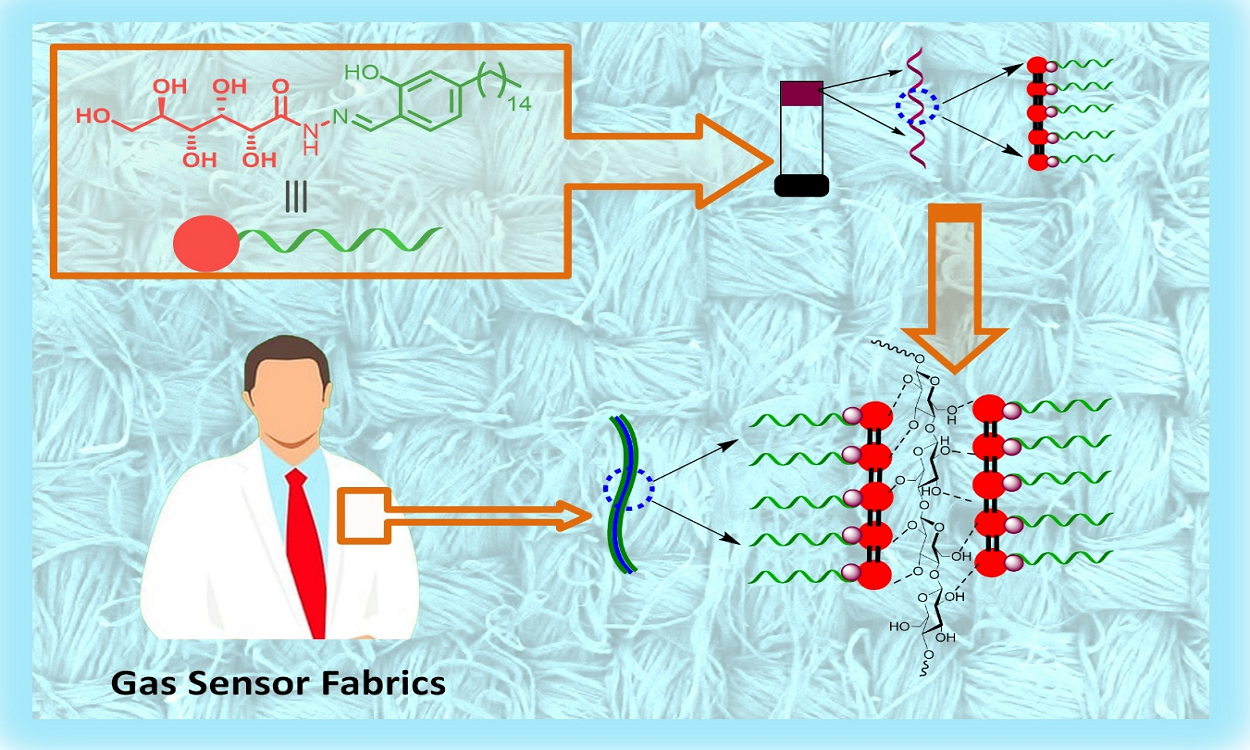
Flexible TMA sensor fabric has been developed from environmentally friendly bio-based molecules following the concept of Swachh India “From Waste to Wealth.
APR 28, 2020 | BY RATNESHWAR THAKUR
Volatile organic compounds (VOCs) are organic chemicals that readily produce vapours at normal air or room temperature. VOCs include both human-made and naturally occurring organic compounds. Most scents or odors are example of VOCs. Interestingly, VOCs also play an important role in communication between plants and passage of mysterious messages from plants to animals. However, some VOCs are dangerous to human health or cause harm to the environment.
Harmful VOCs are usually emitted from industrial processes and household products as gases from certain solids or liquids. Common examples of VOCs are benzene, ethylene glycol, formaldehyde, methylene chloride, and trimethylamine etc.
Among harmful VOCs, trimethylamine (TMA) is a type of colourless, flammable, fishy odour, and poisonous gas. TMA is produced during the intestinal biodegradation of choline and carnitine rich foods such as fish, egg yolk, soybeans. It is also produced by biodegradation of damp building material, plants, and animal products.
Increased level of VOCs emission directly affects the exposed persons. Exposure of TMA causes skin, eyes, nose, and throat irritation, whereas higher TMA exposure results into serious lung related complications. Therefore, developing highly sensitive sensors for such VOCs has become a front-line research for maintaining health and safety.
Now a research team lead by Dr. S. Nagarajan from National Institute of Technology (NIT) Warangal, along with Dr. John B. B. Rayappan, SASTRA Deemed University and Dr. Apurba Das, Indian Institute of technology (IIT) Delhi have developed a TMA sensor fabric using sequential molecular self-assembly technique from silver-incorporated glycolipids.
The newly developed TMA sensor fabrics display a switch like sensing response in the range of 1-500 ppm and exhibit stable response towards 100 ppm without drift. The study has been published in the journal ACS Omega.
Researchers developed sensor fabric in two steps: First step involves the synthesis of self-assembled silver incorporated glycolipids derived from renewable resources, derivatives of monosaccharide and cashew-nut shell liquid (waste material from cashew shell industry).
Second step involves sequential self-assembly of silver incorporated glycolipids on cotton fabric. This part of work was done in the collaboration with Dr. Apurba Das from Department of Textile & Fibre Engineering, IIT Delhi.
“As a natural product, cotton is completely biodegradable. Because of cotton's biodegradable properties, it is 100% eco-friendly and can also be recycled. The processing of cotton fabrics was done using specialised natural enzymatic techniques,” said Dr. Apurba Das.
The research team includes A. Thamizhanban, S. Guru Prasanth, K. Lalitha, Y. Siva Prasad, S, Dinesh Kumar, Apurba Das along with team leaders and S. Nagarajan and R. John Bosco Balaguru.
The study was financially supported by the SERB (DST) and SPARC (MHRD).
Journal Reference:
Fabrication of Biobased Hydrophobic Hybrid Cotton Fabrics Using Molecular Self-Assembly: Applications in the Development of Gas Sensor Fabrics

“We believe that our flexible TMA sensor fabrics hold great promise for various innovative applications in environment, healthcare, medicine, and biology,” Dr. Rayappan added.